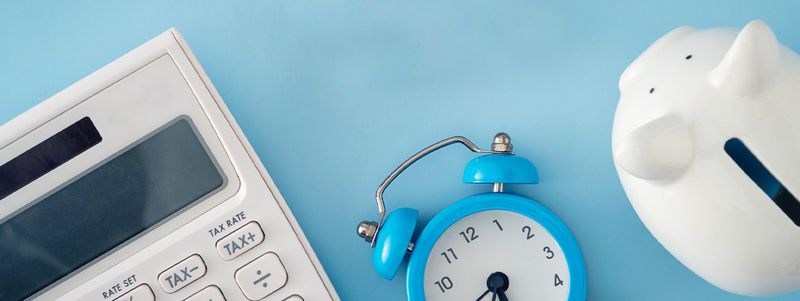Budgeting Post-Pandemic: How to Forecast With the Numbers You Have Now

By: Laurie Mega
It’s so easy to get caught up in the everyday logistics of property management. Focusing on rent and fee collection, marketing to attract tenants, and communication with owners can take the spotlight off the health of your core asset: your business.
“At the end of the day, if you're the CEO of a property management business, your number one job is to own the financial outcome of the business,” says Daniel Craig, CEO of ProfitCoach and lead author of the NARPM Accounting Standards.
After the uncertainty of, well, everything during the pandemic, property managers are keeping a closer eye on their budgets and using them to set tighter goals for the future. Going through a proper forecasting process is an essential part of that process.
Forecasting helps you own the financial future of your business and justify your business decisions. It makes it easier for you to move from a reactive to a proactive position, which has proven to be particularly valuable since the pandemic. By planning for worst-case scenarios, your business can bounce back from setbacks faster. Forecasting can help property management businesses get on a stable growth track.
Given the anomalous nature of the last two years, however, you may be at a loss as to how to put together a reliable forecast. After all, how can you base your future plans on numbers and situations that were out of the ordinary?
By using a simple forecasting method that combines pre-pandemic numbers with current market analysis, property managers can forecast for 2022, no matter what their goals are. They can then set targets and create a monthly plan to hit them.
Here’s how:
Use a Simple Framework
First and foremost, don’t over-complicate the forecasting process. Choose a simple, flexible framework that allows you to build out your forecasts quickly.
“If it isn't simple, then chances are you're not going to do it, or you're not going to do it well,” says Craig.
Use that framework to create a monthly forecast that takes seasonality into consideration. For example, if your properties are located in college towns, rental occupancy will most likely be at its highest beginning in August. This may also be the month with the highest turnover or lease-renewal rates.
Take all of that into account in your forecast. If things change unexpectedly, a simple, flexible framework will allow you to go in and re-forecast quickly.
If the pandemic taught us anything, it’s that things can change in a matter of days. Your forecast should be agile enough to change, as well, to keep your business running on accurate numbers, goals, and predictions.
Look at Non-Financial Growth Over Many Years
To forecast your financial growth you, of course, need to look back at the non-financial growth (or quantitative growth that’s not measured in money) of your company over several years. Take into account not only the anomaly that was 2020 and 2021, but previous years, as well, to get a full picture of your growth as a company.
You may not have added many doors in 2020, but instead saw a steady door count. You may have also seen a lag in rental payments, but, like other property managers we talked to, your turnover rate and new lease counts most likely remained low as tenants stayed put during the pandemic.
But how did your growth during the pandemic compare to previous years? Were you adding doors at a steady rate? What was your turnover rate then, and how quickly were you attracting new tenants?
The right software platform can help you answer these questions. Dive into your custom reports to look at your growth, YoY, before the pandemic and then compare it to your numbers during the pandemic. Then ask yourself questions to better understand your growth. These should include:
- Can you attribute change in growth to the pandemic?
- If not, or at least not entirely, then else might have been at play?
- Previous to those years, how many doors had you added, YoY?
- How many doors, if any, would you have to add in the coming year to recover your previous growth rate?
From there, analyze the market to get an understanding of how the rental market is faring in your area. According to ApartmentList, rents rose steadily this year, first recovering from the pandemic and then surpassing pre-pandemic trends. What are rental rates doing in your markets as tenants shift to a post-pandemic world?
And now that eviction moratoria are ending, what will that mean for the growth of your properties?
Take all of this into account as you create your budgeting forecast.
Look at Year-Over-Year Numbers Before Making Big Leaps
The coming year may be a recovery year for your property management business, where budget forecasting reflects more modest goals that get you back on track. In that case, look over YoY numbers to measure growth both before and during the pandemic, then base your forecasting on that.
Many property managers, however, didn’t experience a dip in business during the pandemic, particularly those who manage single-family homes. For those managers, 2022 may seem like the perfect time to set some aggressive goals.
Still, those goals should be justified by either market research or by YoY analysis.
“If you're going to deviate from past performance,” says Craig, “you should have a detailed, realistic plan that articulates a justification for that deviation.”
Either way, dig into your budget management software and look at your numbers. Analyzing how well you stayed within budgets in past years will help you determine whether or not your goals should be audacious or more reserved for the coming year.
Use Multiple Scenarios
Of course, everyone likes to forecast and plan for a successful year, but it’s important to play out downside scenarios as well.
Craig’s team builds out a model for their clients that accounts for possible delinquencies— something many property managers had to deal with in the last two years—as well as changes in rent prices and other situations that might affect your bottom line negatively.
“A plan B helps you understand and have some concrete awareness around what kind of expenses you might have to cut to survive a negative scenario,” he says.
Evaluate Past Commitments to Set Future Commitments
According to Craig, how well or how poorly past years have played out depend on a firm’s commitment to its goals. He encourages clients to look back on previous years to determine whether or not their teams truly shifted their priorities to meet prior goals.
Again, you can use property management software with custom reports and a dashboard to maintain a clear picture of goals and commitments. Let’s say your goal in 2019 was to decrease maintenance’s time on site for each job, while still collecting the minimum one-hour fee, to increase profitability. You can use your reports not only to see how much time maintenance logged on each job, but whether or not job proper staffing and resources were available.
Craig acknowledges, of course, that there are years where unexpected events derail a company’s goals, 2020 being one of those years. But, in general, he encourages property managers to look back on their goals, their commitments, and actual outcomes.
Why is this helpful for forecasting future performance?
“Because it brings clarity,” he explains. “If you’re thinking about adding 100 doors, what do your commitments really need to be and where do you need to see a shift in your commitments?”
Track Variances Between Forecast and Actual
Tracking variance is important not only for identifying issues, but also for setting realistic goals.
Recently, Craig notes that he’s seen property managers tracking YoY variances more closely.
Property managers most likely saw increased variance last year and the year before, as late and other regularly collected fees fell off.
Take a look at your accounting reports and compare them to your forecasted goals for years past. If you’ve integrated your accounting software with your property management software, you can compare financials with logistics such as time on site for maintenance, rental delinquencies and late fees, and owner payments.
As you progress through the year, use those tracked variances to refine your budget forecasting goals. If your variances are high, you can find places to scale back on more aggressive goals, for example.
Forecasting for the next year may seem like a heady task given the uncertainty we’re becoming so familiar with. If you use only the numbers from the past few years, you’ll most certainly come out with an inaccurate budgeting forecast, and the same is true if you ignore the period of the pandemic altogether.
By looking into your custom reports and making full use of integrated accounting software, you can combine data from fiscal years both before and during the pandemic. A forecast built on this strong foundation will serve your property management company far into the future and help you deal with the uncertainty that any year can bring.







